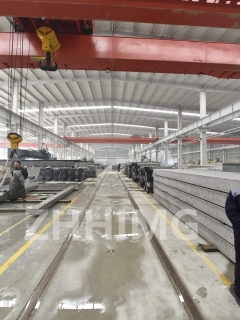Granite is a popular material choice for the components of bridge CMM (Coordinate Measuring Machine) due to its excellent stability, durability, and resistance to wear and tear. However, not all granite materials are the same, and choosing the appropriate one according to the actual needs of the bridge CMM is important for achieving accurate and reliable measurements. Here are some factors to consider when selecting the right granite material for your bridge CMM.
1. Size and Shape
The size and shape of the granite components need to match the specifications of the bridge CMM. This includes the overall size, thickness, flatness, and parallelism of the granite slab, as well as the shape and position of the mounting holes or slots. The granite should also have sufficient weight and stiffness to minimize vibration and deformation during measurement operations, which can affect the accuracy and repeatability of the results.
2. Quality and Grade
The quality and grade of the granite material can also affect the performance and longevity of the bridge CMM. Higher grades of granite tend to have lower surface roughness, fewer defects and inclusions, and better thermal stability, all of which can improve the measuring accuracy and reliability. However, higher-grade granites also tend to be more expensive and may not be necessary for all applications. Lower-grade granites may still be suitable for some CMM applications, especially if the size and shape requirements are not too stringent.
3. Thermal Properties
The thermal properties of the granite material can have a significant impact on the accuracy of the measurements, especially in environments with wide temperature variations. Granite has a low coefficient of thermal expansion (CTE), which means it is relatively stable over a wide temperature range. However, different types of granite may have different CTE values, and the CTE can also vary with the orientation of the crystal structure. Therefore, it is important to choose a granite material with a CTE that matches the ambient temperature range of the measuring environment, or to use thermal compensation techniques to account for any temperature-induced error.
4. Cost and Availability
The cost and availability of the granite material is also a practical concern for many users. High-quality granite materials tend to be more expensive, especially if they are large, thick, or custom-made. Some grades or types of granite may also be less commonly available or more difficult to source, especially if they are imported from other countries. Therefore, it is important to balance the performance requirements of the bridge CMM with the available budget and resources, and to consult with reputable suppliers or manufacturers for advice on the best value-for-money options.
In summary, choosing the appropriate granite material for a bridge CMM requires careful consideration of the size, shape, quality, thermal properties, cost, and availability of the material. By keeping these factors in mind and working with knowledgeable and experienced suppliers or manufacturers, users can ensure that they have a stable, reliable, and accurate measuring system that meets their specific needs and requirements.
Post time: Apr-16-2024

